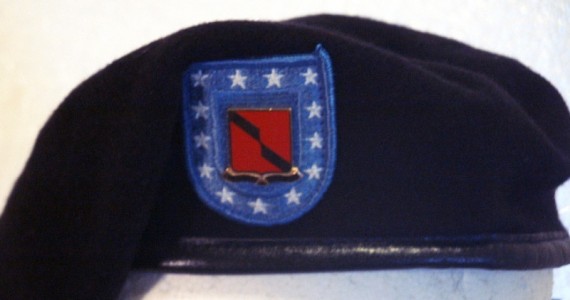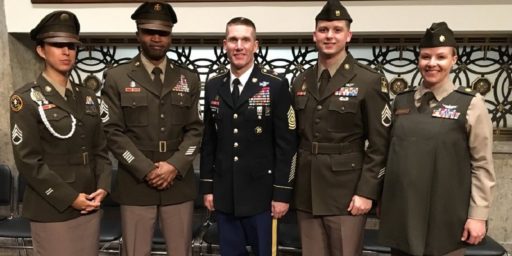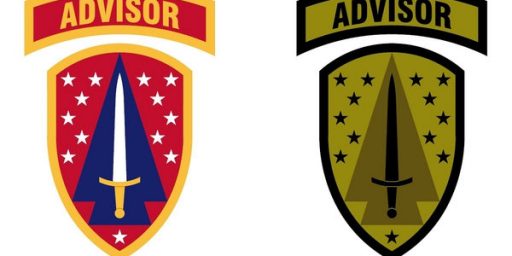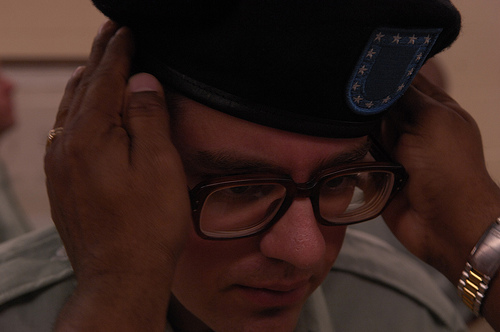Army Ditches Black Beret For Patrol Caps
After a decade, the Army is reversing the most hideous decision in its long history.
After a decade, the Army is reversing the most hideous decision in its long history.
AP (“Army ditches black berets in favor of caps“):
It’s hot, it doesn’t keep the sun out of your eyes, and you need two hands and a mirror to make sure it’s on straight. After 10 years of complaints, the Army is all but ditching the black wool beret and allowing soldiers to go back to the old brimmed patrol cap for their everyday duties.
“It’s the military equivalent of being able to wear a baseball cap to work,” said Col. Pete Brooks of the South Carolina Army National Guard. “Wearing the beret in 100-degree South Carolina heat was like wearing a wet piece of black wool on your head.”
Army Secretary John McHugh ordered the change to take effect Tuesday, the service’s 236th birthday.
Elite units in the 1.1-million-member Army will continue to wear their colored berets as a mark of honor — green for Special Forces, tan for Rangers, maroon for airborne troops. But from now on, other soldiers will have to pull out the black beret only for special events, such as change-of-command ceremonies. Soldiers, of course, will still wear their helmets in combat.
“This just makes things a little bit easier for us,” said Staff Sgt. Mylinda DuRousseau, who works with the 3rd Army at nearby Shaw Air Force Base. She said working as a cook meant she had to keep her shoulder-length hair tied back in a bun, which couldn’t fit under the tight beret.
And then there was the three-step process of putting the thing on right: First, adjust the blue patch over the left eye; next, use two hands to straighten it; then, pull it on far enough so it stayed put, DuRousseau said.
In fact, the Army had to install mirrors at entries and exits so soldiers could be sure they had it on properly.
As for the patrol cap — a soft, 50-50 cotton-nylon blend that looks like a flat-top baseball hat in camouflage green — “you could reach in your pocket and flip it on, and just keep moving,” Brooks said.
The change is one of several new uniform adjustments, including allowing soldiers to either sew or use Velcro to attach insignia and nametags. In the past, badges had to be pinned on, a lengthy process that required the use of a ruler to keep everything lined up. Another switch will be a return to dressier uniforms for Army men and women inside the Pentagon, a step ordered to spiff up the Army’s image.
The uniform changes — especially the dropping of the beret — were popular on the Army’s Facebook page, which registered at least 3,000 “likes” after the switch was made.
The black beret became standard a decade ago, introduced in a surprise move by then-Army Chief of Staff Gen. Eric Shinseki as a “symbol of unity” and a morale booster. But elite units that were distinguishable by their berets resented the change.
Shinseki’s status as history’s greatest monster lives on but will perhaps diminish over time.
(I would note, however, that if you require a mirror to put on a beret you probably shouldn’t be trusted with live ammo.)







Amazing we kept a French(*) hat that long.
* – French and Spanish
I imagine his accurate Iraq force predictions will be remembered long after this is forgotten.
Please explain. Briefly.
@Rock: It’s a joke, reflecting how seriously this was taken at the time. In fact, Jimmy Carter is history’s greatest monster.